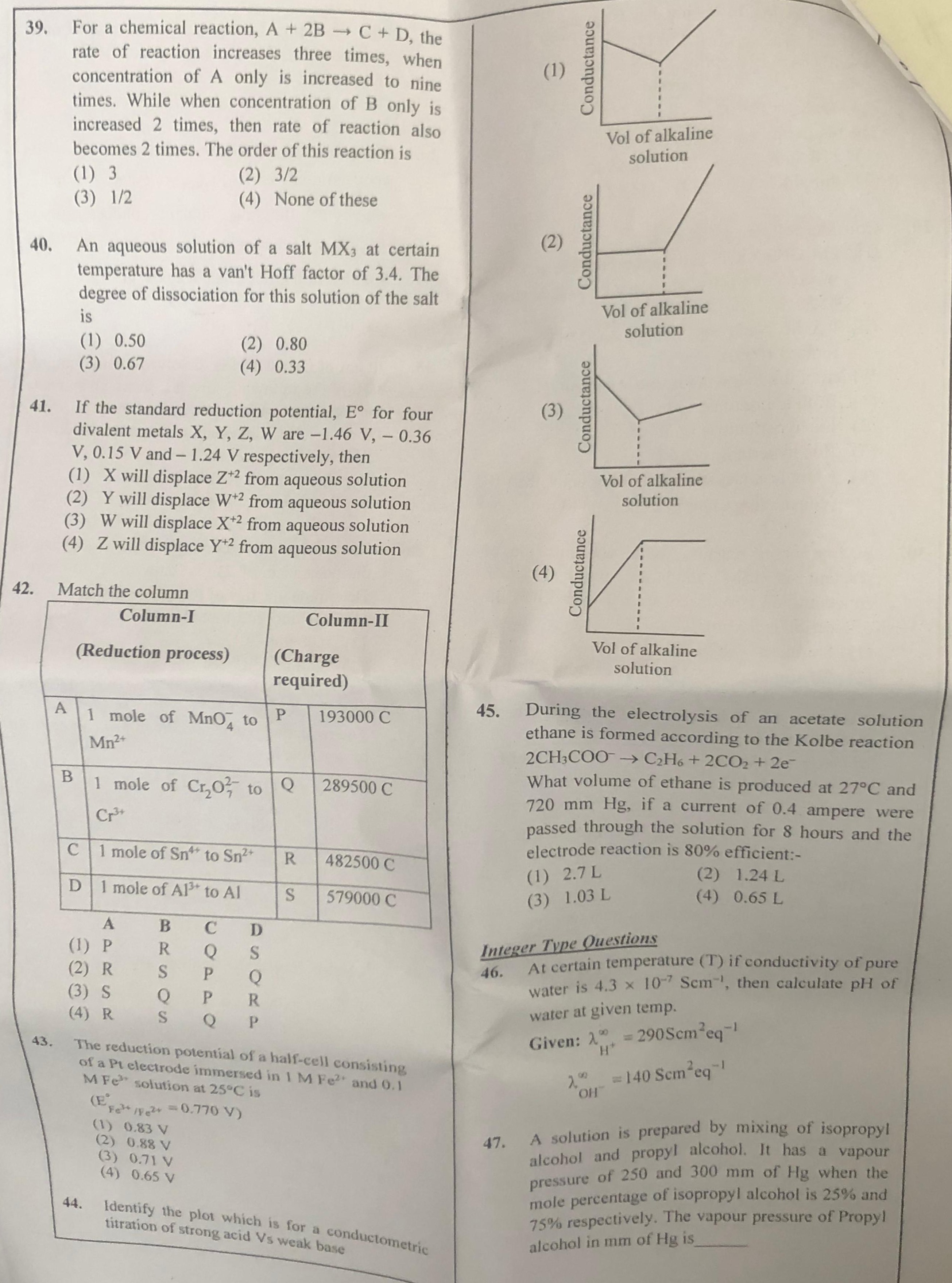Question
Question: For a chemical reaction, A + 2B → C + D, the rate of reaction increases three times, when concentrat...
For a chemical reaction, A + 2B → C + D, the rate of reaction increases three times, when concentration of A only is increased to nine times. While when concentration of B only is increased 2 times, then rate of reaction also becomes 2 times. The order of this reaction is

A
3
B
3/2
C
1/2
D
None of these
Answer
(2) 3/2
Explanation
Solution
Let the rate law be Rate = k[A]^x[B]^y. When [A] is increased 9 times (and [B] is constant), the rate increases 3 times. R1=k[A]x[B]y R2=k[9A]x[B]y=9xR1 Given R2=3R1, so 9x=3⇒(32)x=31⇒2x=1⇒x=1/2.
When [B] is increased 2 times (and [A] is constant), the rate becomes 2 times. R1=k[A]x[B]y R3=k[A]x[2B]y=2yR1 Given R3=2R1, so 2y=2⇒y=1.
The overall order of the reaction is x + y = 1/2 + 1 = 3/2.
